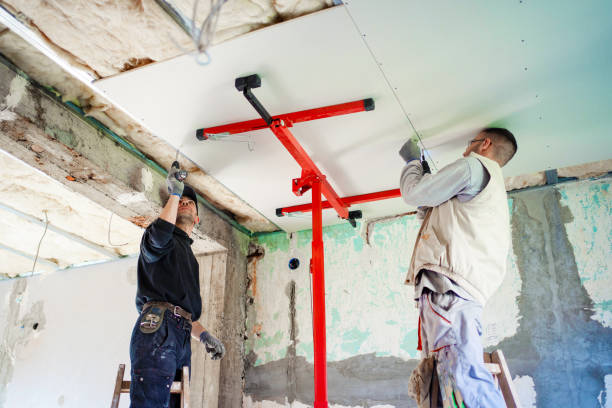Tree relocation—also known as tree transplanting—is the process of moving a living tree from one spot to another. In Bradenton, this technique is often used to preserve healthy trees during construction or landscaping changes. With the right timing, tools, and expertise, many trees can be successfully relocated, helping protect the environment while maintaining shade, beauty, and property value.
What Is Tree Relocation and How Does It Work?
Tree relocation means digging up a living tree and moving it to a new spot. This is also called tree transplanting. It’s a delicate process, but with the right equipment and timing, it works—especially in Florida’s sandy soil.
The relocation process usually starts with planning and soil testing. Arborists use tools like tree spades, cranes, and rootball wraps to safely lift and transport trees without damaging their structure. At the new site, a pre-dug hole is waiting, and the tree is replanted with care, staked for support, and monitored closely.
Reasons to Relocate a Tree in Bradenton
There are lots of good reasons to move a tree instead of cutting it down. Some of the most common include:
- Construction projects – Trees often stand in the way of a home addition, pool, or driveway
- Landscape redesign – Maybe you want more sunlight on your patio, or better symmetry in your front yard
- Root problems – Roots getting too close to the house, sidewalks, or pipes
- HOA or city guidelines – Some communities require you to preserve mature trees or replace them if removed
If the tree is healthy and well-placed in the new plan, relocation is often the smarter, greener choice.
Signs a Tree Is a Good Candidate for Relocation
Not every tree can be moved. Some are too large, too old, or too fragile. But many are perfect for relocation.
A tree is more likely to survive transplanting if:
- It’s young or medium-aged (ideally under 25 feet tall)
- It has a strong, healthy root system
- The species is adaptable, especially to Florida’s hot, humid climate
- There’s plenty of space and sunlight at the new location
Trees like palms, oaks, crape myrtles, and magnolias tend to relocate well when handled by professionals.
When Tree Removal Might Be the Better Option
There are times when removal still makes sense. For example:
- The tree is diseased, dying, or structurally unsound
- It’s too large to move safely, even with cranes
- The species is invasive or not suitable for residential areas
- Moving it would disturb nearby utilities or foundations
Before deciding, always have a certified arborist assess the tree’s health and the risks involved.
Tree Relocation Timing: Best Seasons for a Successful Move
Timing is key. In Florida, the best time to move a tree is during the cooler months—typically late fall through early spring. During this time, the tree is semi-dormant, which lowers stress and reduces the chance of transplant shock.
Avoid moving trees in the heat of summer unless absolutely necessary. Bradenton’s sandy soil dries out fast, so it’s important to ensure proper watering and root care right after relocation.
What to Expect: Tree Transplanting Process Step-by-Step
Here’s a quick look at how tree relocation usually works:
- Inspection & Planning – Arborists examine the tree, soil, and new location.
- Root Pruning (optional) – Some trees need their roots trimmed weeks in advance to prepare for the move.
- Digging & Lifting – Special tools lift the tree without harming its rootball.
- Transport – The tree is wrapped and carefully moved by trailer or crane.
- Replanting – A hole is dug in the new spot, the tree is placed, and the soil is packed tight.
- Staking & Aftercare – The tree is staked for stability, watered deeply, and monitored for signs of stress.
Environmental and Aesthetic Benefits of Tree Relocation
Moving a tree isn’t just about saving money or space—it’s also a good move for the environment.
Benefits include:
- Preserving decades of growth and shade
- Reducing waste that would go to the landfill after tree removal
- Boosting property value with mature trees in visible locations
- Keeping Bradenton green, one tree at a time
Mature trees add instant curb appeal. Instead of waiting years for a sapling to grow, you can enjoy shade and beauty right away.
Why Choose Panorama for Tree Relocation in Bradenton
Relocating a tree takes more than a shovel and a strong back. It takes certified professionals, the right tools, and years of experience.
Panorama Tree Care offers expert tree relocation services Bradenton FL property owners can trust. Our ISA-certified arborists handle everything—from planning to replanting—with a deep understanding of tree biology, root systems, and the local ecosystem.
We also serve HOAs, commercial sites, and developers who want to preserve trees during major construction projects.
FAQs
How much does tree relocation cost?
It depends on the size of the tree, location, and accessibility. Call us for a free, no-pressure estimate.
Will my tree survive the move?
Most trees survive if properly handled and cared for during and after relocation. Arborist supervision is key.
Can I move a tree myself?
Small trees might be moved by homeowners, but larger trees should always be handled by professionals.
Do I need a permit to move a tree in Bradenton?
Some neighborhoods and cities require permits, especially for protected or heritage trees. We’ll help you check.
Final Thoughts
Before cutting down a tree that’s in the way, ask yourself: could this tree be moved? In many cases, the answer is yes—and it’s a decision that protects both your property and the planet. With the right planning, tree relocation saves time, money, and natural beauty.
If you’re ready to explore your options, schedule a consultation with Panorama Tree Care. We’re here to help your trees live longer and grow stronger—even in a new home.


